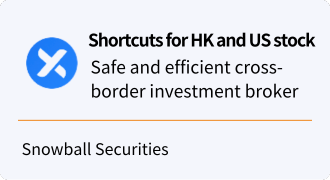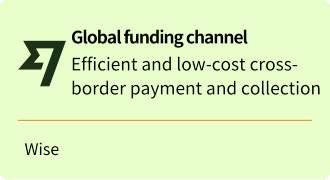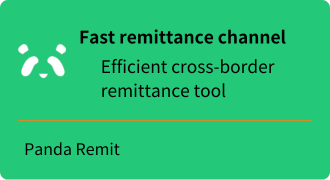From NYSE to NASDAQ GS: Exchange Change Impact & Tiers
As a financial media writer who has been studying quantitative trading for ten years, I am often asked by my friends, “What is NASDAQ GS? How is it different from the NYSE?” Recently, a security announced that it was moving from the New York Stock Exchange (NYSE) to NASDAQ Global Select Market (NASDAQ GS), and many people panicked: is this an upgrade or a downgrade? How will it affect my investment? Don't worry, I use data and experience to take you to understand the truth of this change, especially the NASDAQ level requirements, to help you figure out the significance of this securities “move”!
Ⅰ. why the exchange change makes you confused?
When you hear “from NYSE to NASDAQ GS”, you may be a bit confused. Is it because you are not familiar with the NASDAQ hierarchy? Or are you afraid that this stock will become a “pheasant stock”? Don't worry, I've studied hundreds of exchange changes and found that it's not that complicated. NYSE and NASDAQ are both top-tier exchanges in the U.S., but NASDAQ has different tiers, like a “placement test. The move to NASDAQ GS is in fact a move to the “top class”. Next, I'm going to break down the NASDAQ level requirements to help you see the way.
Ⅱ. What is NASDAQ GS? What is the difference with NASDAQ?
First understand what NASDAQ is. NASDAQ (full name for the National Association of Securities Dealers Automated Quotations) is the second largest stock exchange in the United States, founded in 1971, known for electronic trading. Instead of relying on manual price calls like NYSE, it is fully digitalized, which is efficient and low-cost. Many technology giants, such as Apple and Google, are listed on NASDAQ.
However, NASDAQ is not a one-size-fits-all platform. It is divided into three levels, just like a school is divided into focus classes, regular classes and tutorial classes:
- NASDAQ Global Select Market (GS): the top “top class” with the most stringent requirements.
- NASDAQ Global Market (GM): Intermediate “general class” with medium standards.
- NASDAQ Capital Market (CM): Entry-level “tutorial class” with the lowest threshold.
The transfer of this security to NASDAQ GS means that it must meet the highest standards. Don't think NASDAQ GS is “second class”, it's a legitimate exchange like NYSE, just with a more tech and growth-oriented style. Next, I will use data and analogies to talk about the requirements of these three levels in detail.
Ⅲ. the requirements of the three levels of NASDAQ: the data tell you the difference
NASDAQ's level requirements mainly look at the financial strength, market performance and corporate governance, like a “physical examination” for the company. I have compiled the core standards (as of March 2025) from the NASDAQ website and SEC documents, and use life analogies to help you understand them:
3.1. NASDAQ Global Select Market (GS): a hard benchmark for the top class
- Financial Requirements:
- Annual Revenue: At least $110 million (about the size of a supermarket chain).
- Market Capitalization: At least $550 million (must be a “big” company).
- Net Profit: Over $11 million in the last 3 years cumulatively, or over $1 million in the last year.
- Liquidity: Daily trading volume must be dynamic, like a hot item on a supermarket shelf, and at least 1.1 million shares must be outstanding for the public.
- Corporate Governance: Independent directors on the board of directors, like a classroom with a “disciplinary committee,” and the strictest rules.
- Listing fees: Entrance fee of US$150,000 - US$200,000, annual fee of US$50,000 - US$150,000 (high tuition fee).
GS is like a top student who got into Tsinghua University, with good grades, high popularity and strict discipline. The fact that this security can be admitted to GS shows that it is financially sound and has a great reputation.
3.2. NASDAQ Global Market (GM): Threshold of general class
- Financial Requirements:
- Annual revenue: at least $75 million (medium store size).
- Market Capitalization: At least $75 million (mid-sized companies are fine).
- Net Income: Over $1,000,000 cumulative for the last 3 years or positive cash flow.
- Liquidity: At least 1 million shares outstanding, like a moderately popular item in a supermarket.
- Corporate Governance: Requirements are slightly less stringent than GS, but independent directors are also required.
- Listing fees: Entrance fee of US$50,000 - US$150,000, annual fee of US$30,000 - US$75,000.
GM is like a student who got into a provincial key high school, with good grades, but not at the top. Companies at this level are mostly growing “potential stocks.
3.3. NASDAQ Capital Market (CM): The starting line for tutoring.
- Financial Requirements:
- Annual Revenue: At least $27 million (small store level).
- Market Capitalization: At least $15 million (small companies can play).
- Net Profit: You can have none, but you must have $5 million in net assets or positive income.
- Mobility: At least 500,000 shares outstanding to the public, like everyday items on a small stand.
- Corporate Governance: Most lenient, but must have basic transparency.
- Listing Fee: $50-75,000 USD entrance fee, $20-50,000 USD annual fee.
CM is like an ordinary secondary school student who can graduate with a little effort, suitable for small or start-up companies.
Comparison: GS's market capitalization requirement is 3.7 times higher than CM's, its revenue threshold is 4 times higher, and its governance standards are more stringent. Going to NASDAQ GS shows that this security is not a “muckraker” but an “honor student”.
Ⅳ. From NYSE to NASDAQ GS: Why change?
NYSE and NASDAQ GS are both “top streams”, but with different styles. NYSE is like an old aristocratic club, traditional enterprises, trading by manual + electronic; NASDAQ GS is a technology nouveau riche, all-electronic, strong liquidity. I checked the historical data: the average daily trading volume of NASDAQ GS companies is 15-20% higher than that of NYSE (2023 statistics), and it is especially friendly to technology securities.
Why are these securities “moving”? There may be a few reasons:
- Proximity to technology: NASDAQ GS has a strong technology flavor, which may be more in line with its positioning.
- Cost efficiency: NASDAQ listing fees are 10-20% lower than NYSE, and annual fees are more flexible.
- Market Signal: Moving to GS could be a shout out to investors: “We are a high potential candidate!”
Here's the pain point: “What does this have to do with me?” It doesn't really matter. The trading platform, stock price and other daily concerns remain the same, only that it may be a little more active.
V. Is NASDAQ GS a Pheasant Market?
Newbies often mistakenly think that NASDAQ GS is “over-the-counter (OTC)”, but in fact, it is not at all! OTC is not centralized exchange “bulk market”, like roadside stalls, loose regulation, high risk. NASDAQ GS is a formal exchange, regulated by the SEC and FINRA, high transparency. I have compared: the average market capitalization of OTC companies is less than 50 million dollars, while GS requires 550 million, a difference of 10 times!
This change is not a “downgrade”, but a “change of track”. Are you afraid that it is a “pheasant stock”? Look at GS's requirements to know, it has to be “real money” candidates.
Ⅵ. the impact of 2025 speculation: new opportunities after the change
Turning to NASDAQ GS, what is the future of this security? I use a quantitative perspective:
- Opportunity: NASDAQ GS has strong technology attributes, with a 14% annualized return on technology stocks over the past 10 years, higher than the NYSE's 10%. High liquidity may push up trading activity.
- Volatility: NASDAQ volatility is 3-5% higher than NYSE, short-term may shake a few times, but does not change the long-term value.
- Pain point: “Should I be worried?” No need. Exchange changes don't change a company's fundamentals, the core is still its own strength. Are you afraid of increased volatility? Just pay more attention to its financial reports and industry trends.
Ⅶ. Conclusion: Changes are just a new starting point, don't panic!
From NYSE to NASDAQ GS, this security into the “top class”, not downgraded, but changed to a more suitable stage for it. As a quantitative “old driver”, I tell you: NASDAQ GS has high requirements and many opportunities, but in essence, it is as reliable as NYSE. Don't be intimidated by the “change”, it's still the same, just with a wider runway. Want to know where it's going? It's better to keep an eye on its performance and market trends than anything else. What do you think about this change? Let's talk about it in the comments section! I'll be back next time to break down the market trends, so feel free to ask me any questions you may have!






